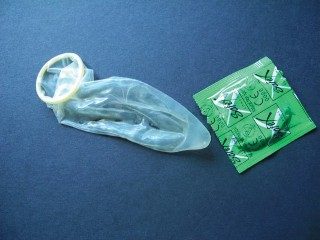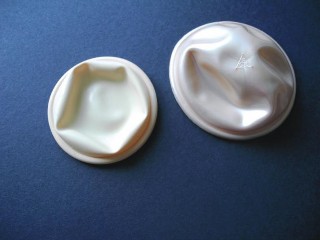Fundamentals of Midwifery: A Textbook for Students (114 page)
Read Fundamentals of Midwifery: A Textbook for Students Online
Authors: Louise Lewis

BOOK: Fundamentals of Midwifery: A Textbook for Students
5.71Mb size Format: txt, pdf, ePub
Permanent methods, i.e. sterilisation or vasectomy are not generally acceptable.
Christian: Protestant
Some Evangelical and Fundamental Protestants may disapprove of contraception. Most however do not object to contraception in marriage.
Jewish faith
Orthodox Jews do not generally approve of contraception. Generally husbands must approve the use of contraception.
Condoms, coitus interruptus and any other means of male contraception are not approved of. The rhythm method and abstinence are also not generally acceptable.
Female oral contraception is permissible, but IUDs that prevent implantation are not. Some women will value monthly menstruation, and therefore methods that stop monthly bleeding would not be acceptable to them.
Islam
Contraception can be viewed as not being permitted, permitted but not approved of, or permitted and acceptable within groups.
Irreversible methods and methods which are seen as inducing abortion (therefore including some IUDs) are not permitted and contraception should only be used within marriage.
Monthly menstruation may be valued by some women so continuous methods would not be acceptable.
Hindu
There are no expressed prohibitions where contraception does not cause any moral or spiritual harm.
Some women will not be educated about contraception until after the birth of the first child and in some families, permission should be obtained from the husband to discuss contraception.
Buddhist
Generally acceptable if preventing conception, but less acceptable if it works by stopping the development or implantation of a fertilised egg. Therefore IUDs are not acceptable.
Abstinence may be the method of choice.
Chinese religions
Taoism and Confucianism permit contraceptive use, but natural methods such as withdrawal and rhythm methods may be preferred.
269
this it is essential that the woman’s medical and obstetric history is known. Some contraceptive methods are not appropriate if breastfeeding because the oestrogen content negatively affects lactation.
Box 12.1 lists the essential information and includes consideration of the woman’s knowledge of the menstrual cycle. Understanding the menstrual cycle is important in relation to under- standing how each method works and also to women understanding why they may become pregnant before their first period. Women should have the opportunity to discuss issues that
270

Box 12.1 Information essential to effective contraceptive advice
Age of the woman
General health, including weight and Body Mass Index (BMI)
Medical history
Gynaecological history, including previous menstrual problems/cycles
Obstetric history
Lifestyle, including smoking habits and health beliefs and religion
Family history in relation to any cardiovascular disease or breast cancer
Previous contraceptive use including any contraception failureAdditionally it is important to consider:


The woman’s knowledge of her menstrual cycle
Any issues that are important to the woman and her partner
are relevant to them; the midwife should therefore allow time for questions and discussion. Listening to the woman is vital to a more individualised approach to advice.
Methods of contraception
Barrier methods
Male condoms
This is the only method of contraception that provides protection against sexually transmitted infections (STI) and used correctly are very reliable (98% effective). Condoms can be obtained free of charge from a range of venues including some General Practitioner (GP) surgeries and Family Planning/Sexual Health clinics. They can also be purchased from chemists and supermar- kets and many outlets have condom vending machines. Condoms must be used every time, at the right time and fitted correctly to be effective. They can split or rupture if not used correctly. Condoms avoid the use of hormone-based contraceptives for those women who are con- scious of weight gain and the effects of hormones on the body. Condoms can be used as soon as required following the birth; however the use of a water-based lubricant may be necessary
if the women feels dry or sore from having sutures at delivery (see Figure 12.2).
Female condoms
These are often referred to as a ‘femidom‘. (Femidom was the original British brand name for the product.) They can also be obtained from Family Planning and Sexual Health Clinics; although they are not quite as freely available as the male condom. The female condom is also made of latex and is placed inside the vagina. It is also a barrier method of contraception, but is slightly less effective than the male condom (95%). Reliability is dependent on being used correctly and in particular the ‘femidom’ needs to fit properly otherwise it can be pushed aside during sexual intercourse. The clear advantage of this method is that it can be put in place before any sexual activity has started and therefore reduces interruption and also allows the women to be in control (see Figure 12.3).

Figure 12.2
Male condoms.

271

Figure 12.3
Female condom.
Diaphragms/caps
There are a variety of different types of caps and diaphragms. They work by being fitted into the vagina and covering the cervix. To be most effective (92–96%) the use of a spermicide is also encouraged which can be considered to be less desirable. This method avoids the use of hormones and it does have the advantage of not interrupting sex. Diaphragms and caps need to be fitted by a doctor or specialist nurse to ensure the right size is obtained. The cap/diaphragm needs to be in place each time the woman has sex; however it can be put in place before sexual activity starts. If the woman has previously used the cap/diaphragm before becoming pregnant she needs to be made aware that she may require a different size postpartum for it to be effec- tive. This is considered to be a useful method of contraception for those women who wish to avoid hormone-based contraceptives (see Figure 12.4).

272

Figure 12.4
Diaphragms/caps.
Hormonal contraceptives
Combined pill
The combined pill is a very effective method of contraception (99%) if taken consistently. There are wide variety of combined pills taken daily for 21 days with a 7-day pill-free week. The pill contains two hormones progesterone and oestrogen. This method can commence on day 21 following the birth, it is
not
however recommended for those mothers who choose to breast- feed, as it has an effect on milk supply. The combined pill needs to be used with caution in those women who have a raised Body Mass Index (BMI) and who also who smoke as it increases the risk of thromboembolism.
Progesterone only pill
Other books
Latin America Diaries by Ernesto Che Guevara
Angels at War by Freda Lightfoot
Time of My Life by Cecelia Ahern
Hot Zone by Catherine Mann
Dom X - The Complete Box Set: Alpha Male Romance by Parker, M. S.
Radio Mystery by Gertrude Chandler Warner
Bad Attitude by K. A. Mitchell
Leaving Home: Short Pieces by Jodi Picoult
Cheater: A Summer Games Short Read (Going for Gold) by Kelly Collins
Beauty from Pain by Georgia Cates